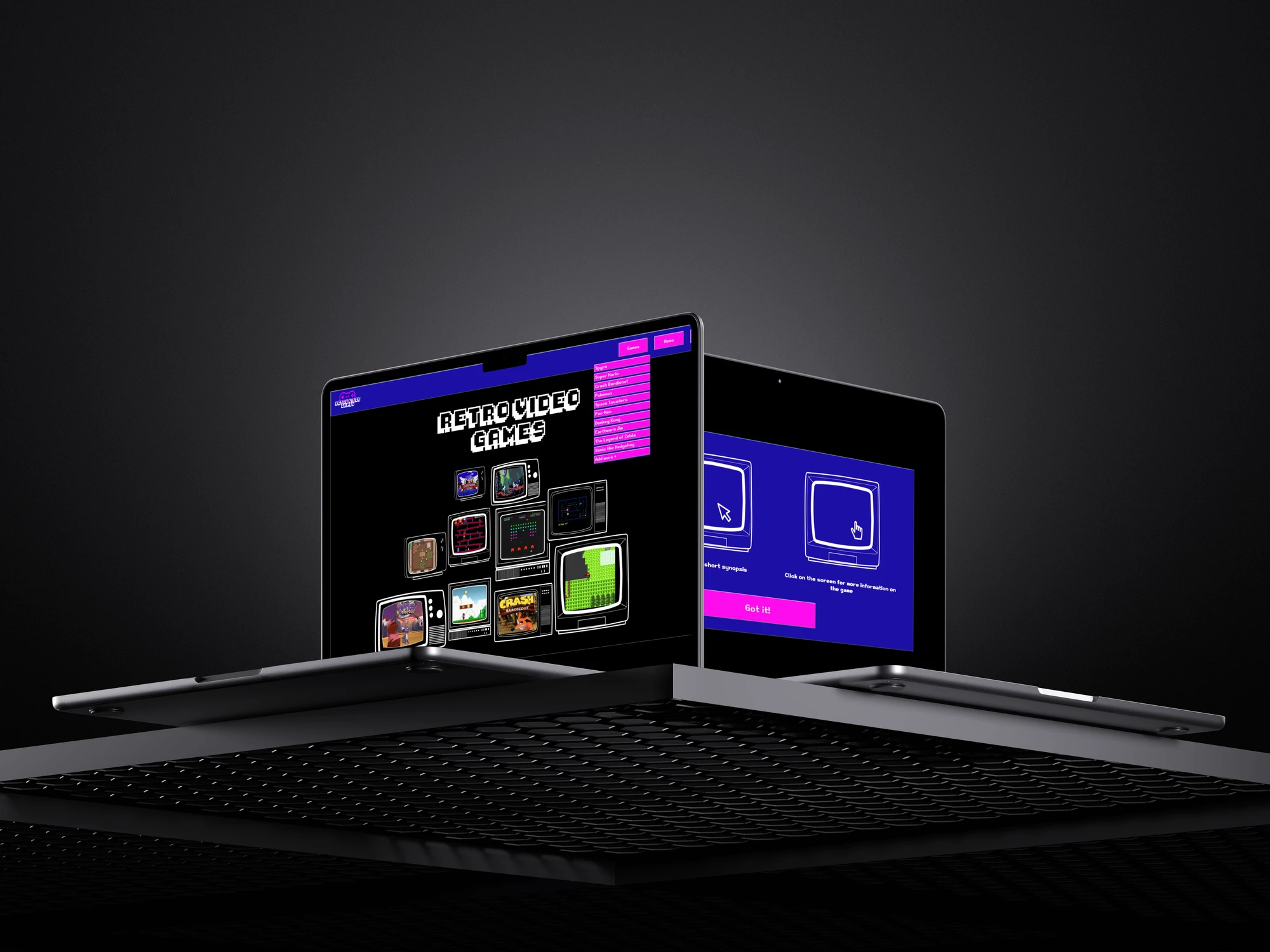Video Game Memorial
UX Design
Project Overview
Objective
As part of a university project we were tasked with creating a homepage for a community. It could be for a community that I was involved with, admired or a fictional community.
Info
Team: Sole UX designer & Researcher
Duration: Two Months
Tools: HTML, CSS, JavaScript, Illustrator and Adobe XD
Type: University Project
Goals
- Capture the community’s essence - Reflect its values, identity, and visual style for authenticity
- Engage the audience - Create an interface that resonates with members and welcomes newcomers
- Deliver useful content - Provide relevant resources and intuitive navigation
- Blend creativity with usability - Add playful design touches without sacrificing clarity or accessibility
Challenges
- Limited user access - Harder to validate needs without direct community feedback
- Visual restraint - Keep retro aesthetics readable and structured
- Technical demands - Build interactive features while maintaining performance and accessibility
01 - Discover
To begin, I explored the world of retro video games to understand the culture, visual language, and nostalgic appeal that resonates with enthusiasts. I researched popular titles, identifying a specific historical era to focus on. While I didn’t grow up playing most of these games, I found their distinctive pixel art, bold colour palettes, and interface quirks fascinating. This research phase also included analysing how communities celebrate these games today, from online forums to fan-made tributes, helping me grasp the emotional connection players have with the medium.
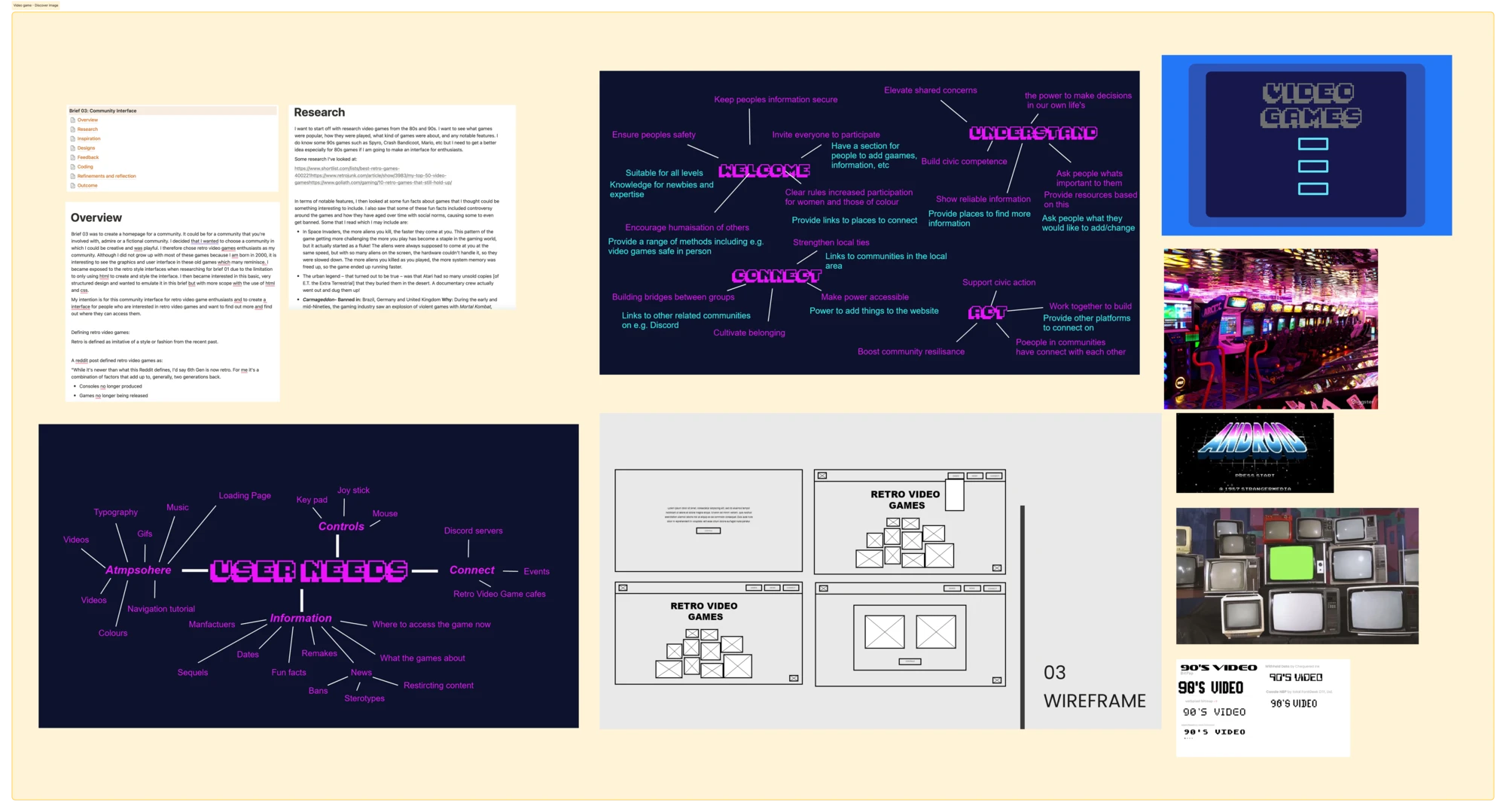
02 - Define
From my research, I identified the core purpose: to design a playful yet informative homepage that acts as a “digital memorial” for retro video game enthusiasts. The site would showcase games in a way that honours their history while also providing practical resources such as where to play them and how to connect with fellow fans. I refined the essential features through a user journey mapping, outlining the key interactions and UI components that would make the experience engaging and nostalgic without overwhelming the user.
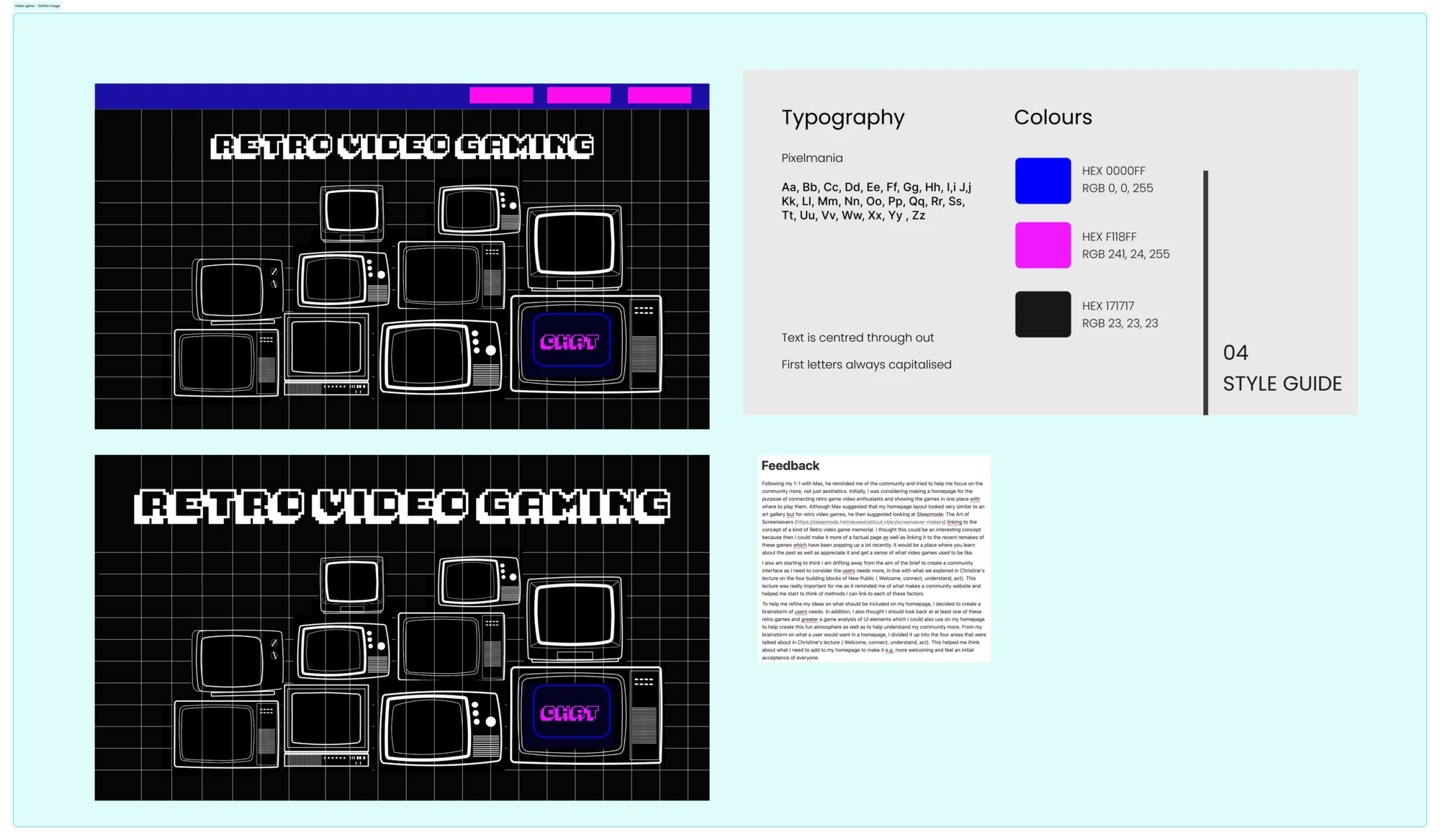
03 - Develop
I translated my insights into initial wireframes, experimenting with layouts inspired by vintage game menus and scoreboards. Using Adobe XD and Illustrator, I created multiple levels of fidelity mock-ups, layering in graphic details influenced by my research. Iterations focused on balancing authenticity with usability ensuring that while the site felt retro, it still adhered to modern UX standards. I incorporated animations, GIFs, and sound effects to capture the lively energy of the gaming era. User testing provided valuable feedback, leading to refinements in navigation and visual hierarchy before coding the site using HTML, CSS, and JavaScript.
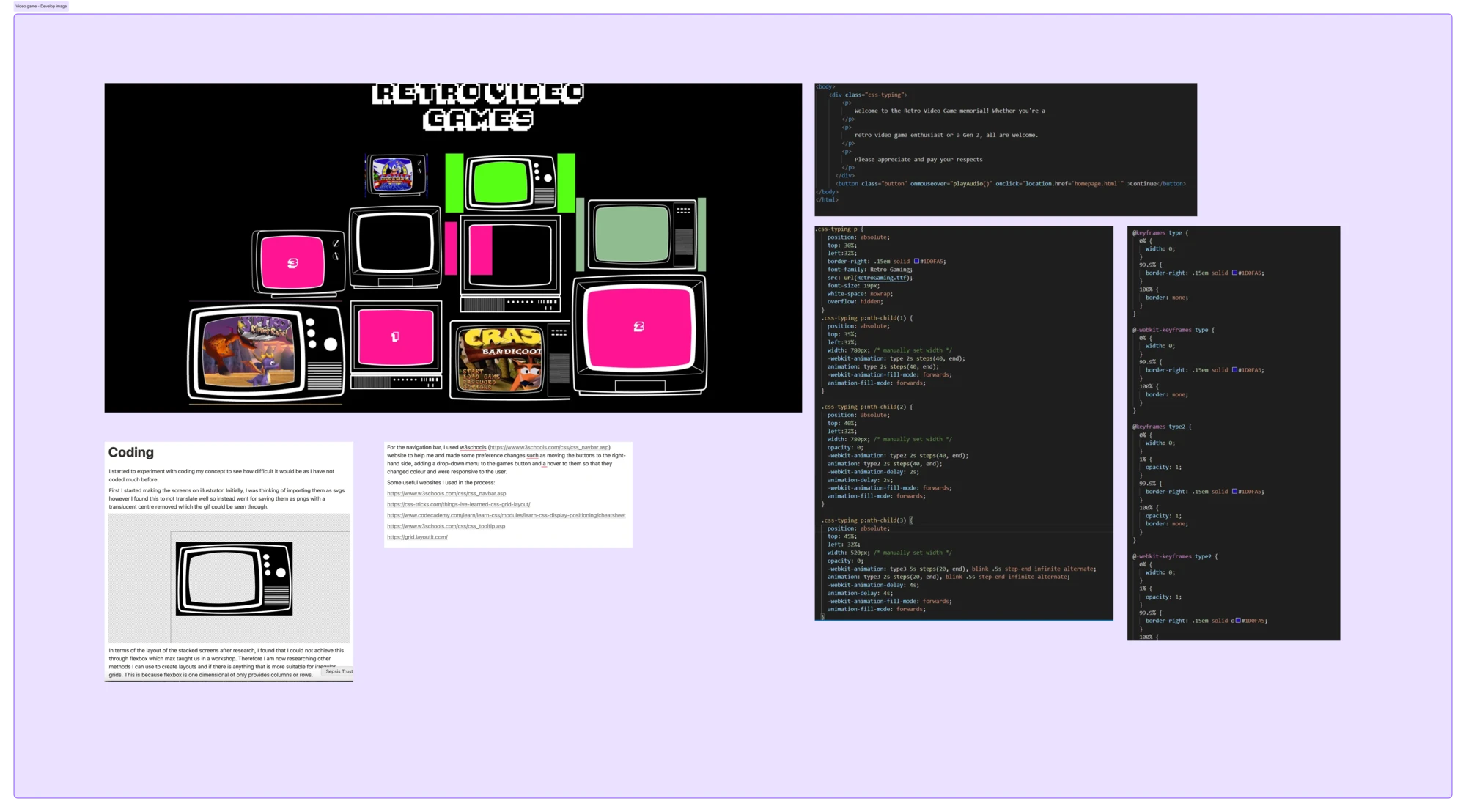
04 - Deliver
The final homepage presented retro video games in a museum-like display, inviting users to explore each title’s history, discover where they could play it, and connect with others in the community. Playful touches such as hover-triggered sound effects and subtle animations gave the site personality, while keeping the design accessible. The project was well received, with positive comments about its nostalgic aesthetic and interactive elements, features not often seen on conventional web pages.
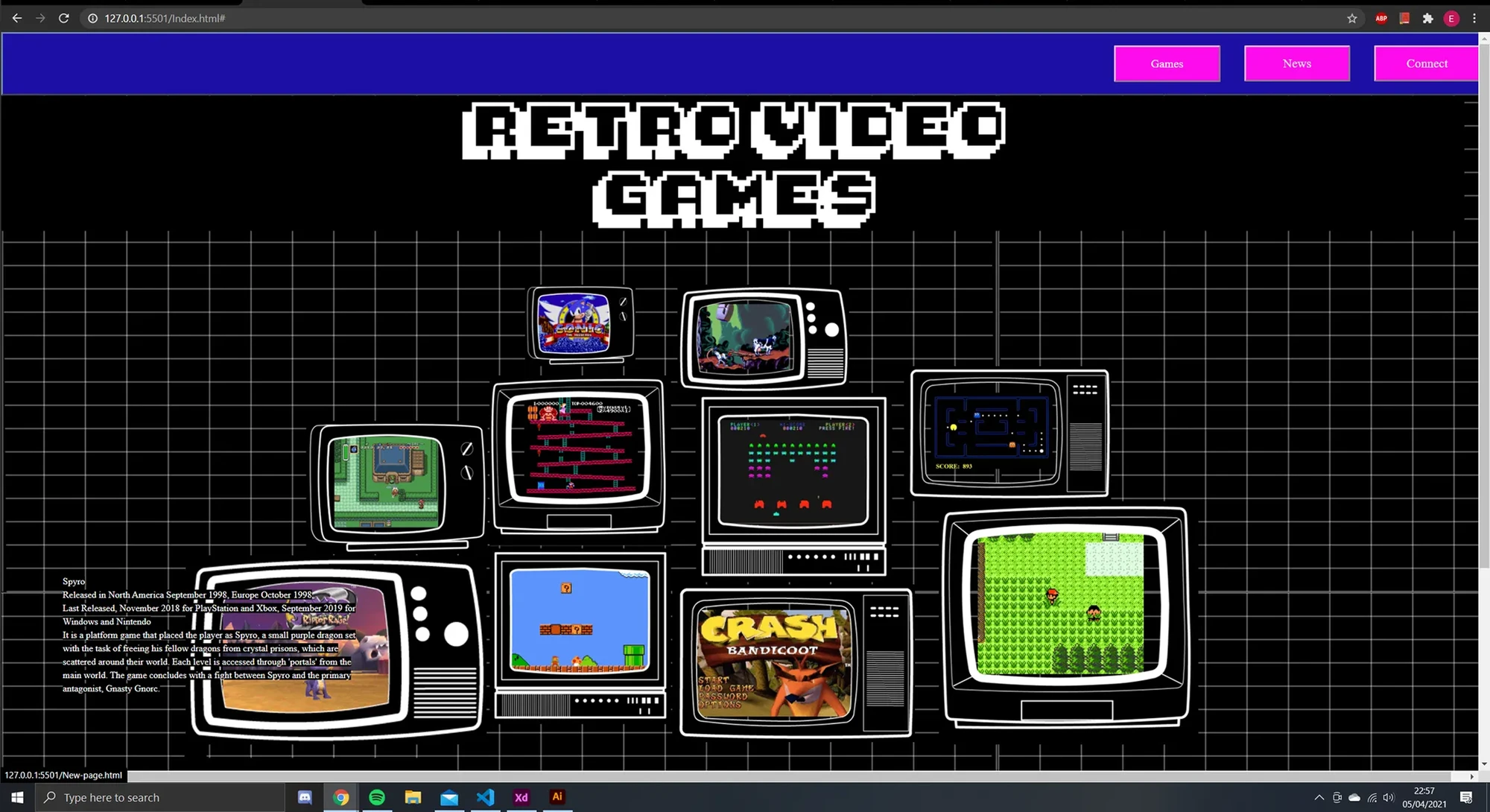
05 - Reflection
This project gave me the freedom to experiment creatively, blending historical research with interaction design. The playful details, ike sound on hover, were a direct result of having the space to push beyond standard web conventions. If I were to extend the project, I would prioritise deeper engagement with the target community, including more extensive user testing and interviews with retro gaming enthusiasts. This would not only validate design decisions but also uncover richer opportunities for interaction and storytelling.
